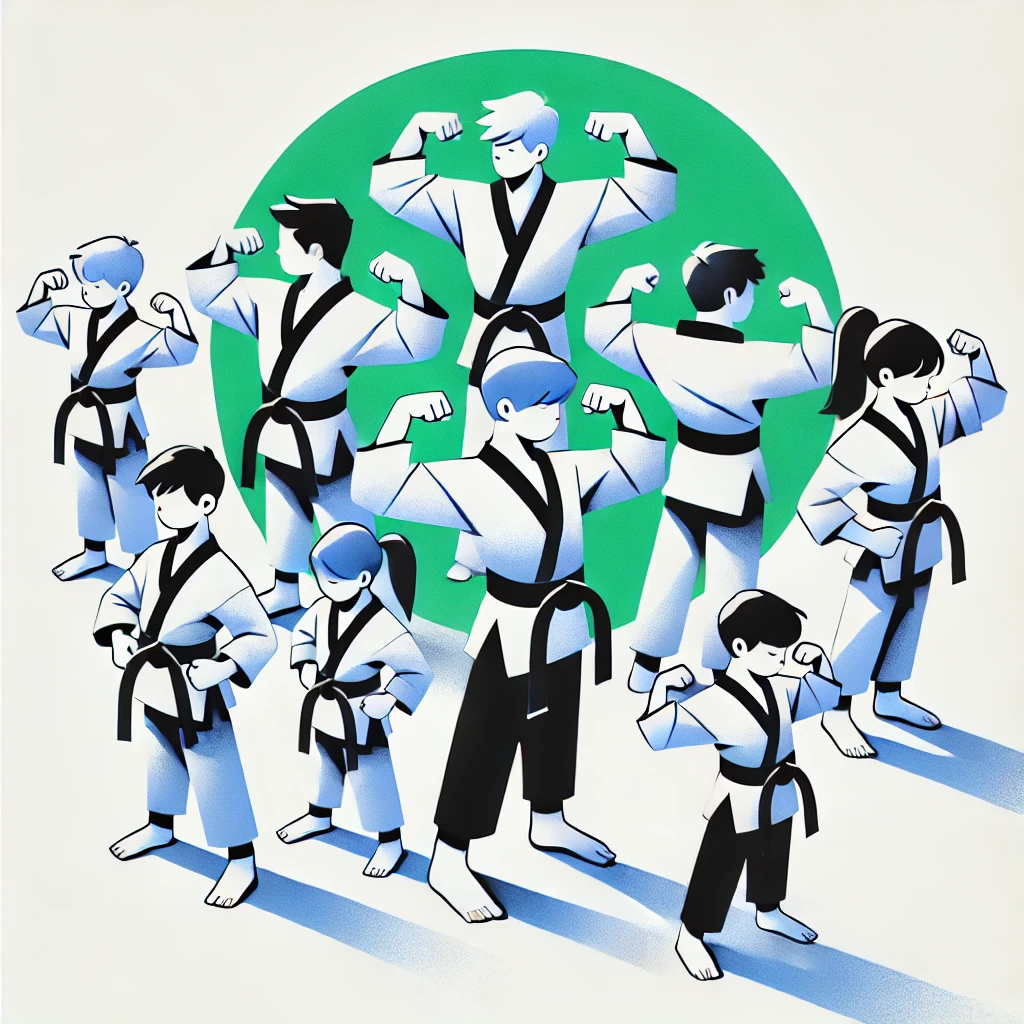Alright, let’s get real for a second. You’ve probably seen those little kids running around with black belts tied around their waists and wondered, “Are they for real? Do they actually know what they’re doing?” Well, it’s a topic that’s got a lot of people talking, and it’s time to dive into the nitty-gritty of the pros and cons of giving black belts to kids.
The Pros
Boosting That Confidence
Imagine being a kid and earning a black belt. That’s like the ultimate confidence booster. It’s not just about the belt itself, but the journey getting there. Kids who train hard and achieve this milestone feel unstoppable. It’s a massive deal for their self-esteem, helping them walk taller, speak louder, and tackle challenges head-on.
Learning Discipline and Respect
Martial arts isn’t just about kicking and punching. It’s about discipline and respect—two things that are seriously valuable. From the moment they step into the dojo, kids learn to bow, listen, and respect their sensei and fellow students. These lessons don’t stay in the dojo; they carry over into school, home, and beyond.
Physical Fitness FTW
Let’s not forget the physical benefits. Training for a black belt means kids are constantly moving, stretching, and strengthening their bodies. It’s a killer way to stay fit, improve coordination, and develop a lifelong love for physical activity. Plus, it keeps them off screens and out of trouble.
Goal Setting and Achievement
Getting a black belt isn’t an overnight thing. It takes time, dedication, and a lot of hard work. This process teaches kids how to set goals and smash them. They learn that nothing worth having comes easy, and that’s a lesson that sticks with them for life.
The Cons
False Sense of Security
Here’s where things get tricky. Giving a black belt to a kid can sometimes create a false sense of security. They might start thinking they can handle any situation, which can be dangerous. It’s crucial for instructors to emphasize that martial arts skills should be used responsibly and that they don’t make anyone invincible.
Variable Standards
Not all dojos are created equal. Some places might hand out black belts like candy just to keep kids and parents happy (and keep the money rolling in). This can seriously devalue what a black belt means. It’s important to choose a dojo that maintains high standards and doesn’t compromise on the quality of training.
Burnout is Real
Training to earn a black belt is no joke. For some kids, the intense training can lead to burnout. If the pressure gets too much, they might lose interest in martial arts altogether. Balance is key here. Kids should be encouraged to train hard but also to enjoy the process.
Emotional Pressure
The journey to a black belt can be a lot for a kid to handle. The pressure to perform, the fear of failing tests, and the competitive environment can sometimes lead to stress and anxiety. It’s important for parents and instructors to keep the atmosphere supportive and not overly pressurized.
My Take: Kyokushin Karate Perspective
As someone who practices Kyokushin karate, let me give you my two cents. Kyokushin is known for its full-contact sparring and intense training. We don’t just go through the motions; we live and breathe every punch, kick, and block. The thought of grading kids to black belts in this style? Honestly, I can’t imagine it. Here’s why:
In Kyokushin, a black belt isn’t just a rank. It’s a testament to years of hardcore training, real sparring, and mental toughness. Kids, as dedicated as they might be, just don’t have the physical and emotional maturity to handle the same level of intensity that adults do. It’s not just about knowing the techniques; it’s about enduring the grind, facing real opponents, and pushing past your limits.
Moreover, full-contact sparring in Kyokushin is only allowed from the age of 18. This is where the real spirit of Kyokushin shines through. We fight with no guards, which isn’t safe or appropriate for younger children. The intensity and risk involved mean that the true essence of Kyokushin—what it really takes to earn a black belt—can’t be experienced until you’re an adult. The black belt in Kyokushin signifies a level of experience and resilience that simply isn’t attainable for kids due to safety concerns and the physical demands of full-contact fighting.
From my personal experience, preparing for my black belt involved training 2-3 sessions per day, not per week. On top of that, I was jogging regularly to build my endurance and mental toughness. This level of commitment and preparation is what truly defines a Kyokushin black belt.
Additionally, in Kyokushin, black belts should not be received faster than in 5-6 years. This timeline is independent of how many classes per week or whatever intense training a student undergoes. Even these 5 years are typically reserved for those who are extremely skilled and exceptionally good—often individuals coming from similar martial arts backgrounds who can pick it up quickly. The journey to a black belt is long and arduous, ensuring that those who achieve it have truly earned it.
The Bottom Line
So, should kids get black belts? It’s not a straightforward yes or no. It really depends on the child, the dojo, and the approach taken. The key is ensuring that the black belt isn’t just a piece of fabric but a symbol of true achievement, hard work, and skill. If done right, it can be an incredibly positive experience that shapes a kid’s character and life in amazing ways.
In the end, it’s all about keeping it real and making sure the journey is as meaningful as the destination. Choose the right dojo, stay balanced, and let the kids enjoy their martial arts journey. Who knows, maybe one day they’ll look back and thank you for it.
Got thoughts? Drop them in the comments below. Let’s keep this convo going!

